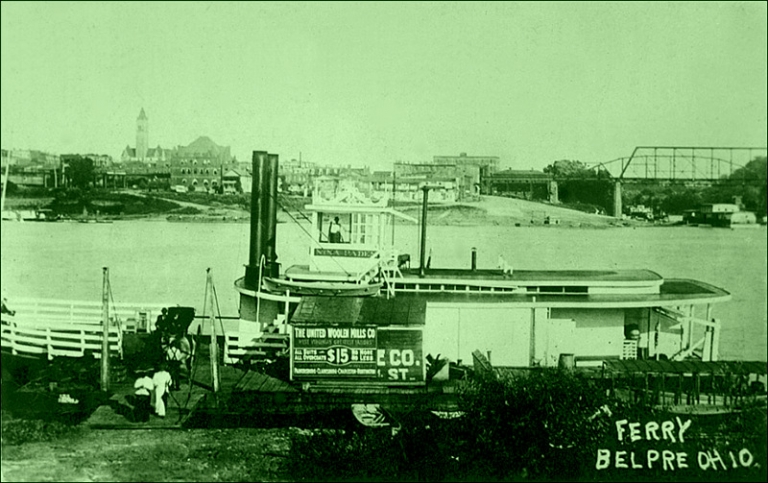
The Nina Paden and its skipper wheeled beyond the call of duty in ferrying the Ohio River at Parkersburg, West Virginia. Of all the tales of the Ohio, theirs may rank among the most fearless.
The following narrative was provided by way of the late Jim Wallen, a reporter for the Huntington Herald-Dispatch, and was based on his interview with Mrs. Charles F. Crawford, whose father, Noah W. Bucker was the skipper on the ferry for a generation and made her an "instrument of mercy in flood and fire."
Mrs. Crawford was a little girl when she learned to pilot the Nina Paden under the guidance of her father, who steered it through some dangerous and exciting events. The Nina Paden was carrying passengers and vehicles across the Ohio between Parkersburg and Belpre, Ohio, in 1907, in command of Captain Buckner, when the captain christened his infant daughter "Nina." And as the years passed the captain frequently let her ride the boat with him and showed her how to handle the big pilot wheel.
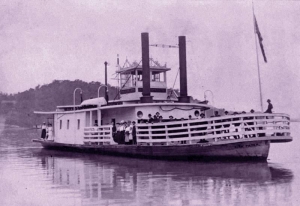
They were memorable years for a child, who not only loved the boat but enjoyed the lively scenes on the river and at the busy waterfront landings. When the big Parkersburg lumberyard adjacent to the boatyard in the Little Kanawha River caught fire, it was up to the little Nina Paden to accomplish the task of pulling out some of the big steamboats that were tied up without steam at the boatyard. Some of these packets and towboats were of imposing size, but the Nina succeeded in moving every one of them to a safe landing away from the flames.
A few years later, many lives and much property were saved by this husky 103-foot steamboat when it went into emergency service during the 1913 flood. As the waters crept farther and farther inland, carrying away buildings, livestock, and even people, the Paden went from place to place in its area, rescuing families and bringing out what livestock and property could be taken aboard. For safety after dark, the steamer would be landed and made fast to shore in a big eddy that swirled slowly around in the bend below Belpre.
Many were living aboard the little steamer for the several days when the river was at its highest, and during the fearsome nights they could do little but look out across the great expanse of dark, swishing water and wonder about the houses and barns that were being borne swiftly down the current. Frequently these buildings could be heard cracking and breaking apart as they were shoved in toward shore by the force of the current that formed the eddy.
One night some members of the crew felt sure they could hear the faint cry of a baby out in the black water as a small frame house floated by. There could be no question about what to do, and, sure enough, a small child was found in a cradle which had been jammed against a slanting upstairs wall by the second-floor furniture. The child was cared for aboard the boat and eventually restored to relatives.
The Buckner homestead was near the river at Belpre, and when there was no longer any doubt that it would be deeply inundated, the Nina Paden came up to take out all the furniture and valuables that could be saved. These belongings were stowed aboard, and the Nina was just backing away when the Buckner home collapsed into the brown water.
For several more years, the popular steamer was engaged in its routine but always interesting work of moving the flow of wheeled and foot traffic across the Ohio. Mrs. Crawford remembers seeing buffalo carried on the boat's broad forward deck with traveling shows that included a tribe of Indians. Cattle dealers sometimes swam their huge herds across the river toward West Virginia, riding along on their swimming steeds while yelling and cracking whips to keep the cattle together. They were also guided by the steamboat, which carried on its deck some of the leaders of the herd, which would be followed confidently by those in the water.
Along with its dependable service and admirable rescue work, the Nina Paden figured in a solemn annual event that gave her a particularly warm place in the hearts of the folks around Parkersburg and Belpre.
"One of my most vivid memories," says Mrs. Crawford, "is of the annual services held aboard our boat each Memorial Day." At 2 o'clock in the afternoon of that day the Civil War veterans, all dressed in their uniforms, both blue and gray, would march down to the boat, followed by citizens with armloads of flowers and wreaths in every conceivable arrangement. After the steamer reached the middle of the river it would stop, then there would be complete silence, followed by a prayer, and the floral tributes would be lowered reverently into the river as we all sang 'Nearer my God to Thee.'
"After this touching scene, in memory of both Union and Confederate men who had died on land and water, the old soldiers would fire a volley. The smoke from their guns stayed in the air, and the flowers drifted slowly southward on the beautiful river, becoming part of a memory that I am sure was never forgotten by those who participated in the ceremony. And there are many in and around Parkersburg who will tell you that they counted those old soldiers each year until they diminished to but nine men for the last of these services held aboard the Nina Paden."
The captain's daughter was but nine years old when the Nina Paden backed out from the Belpre landing for the last time and headed down the river for Ashland, Ky., where the faithful steamer had been purchased by the Ashland & Ironton Transfer and Ferry Co. As she swung around, the pilot blew one long farewell note on the steam whistle and was answered by a packet lying at the bank. Another steamboat took it up and then some factory whistles uptown joined in, and even railroad locomotives added their voices to the chorus.
The Nina Paden disappeared around the bend amid a prolonged salute of appreciation.
Captain Buckner moved with his family to Ironton, 0hio, where he took charge of the ferry steamer running from there to Russell, Ky., and, later, the Buckners went to Proctorville, 0hio, when the captain went aboard the fast Huntington-Bradrick ferry steamer Paul F. Thomas. Still a resident of Proctorville is Mrs. Crawford's brother.
After leaving Belpre and going to Ashland, where it was renamed the City of Ashland, the former Nina Paden carried on its faithful service back and forth across the river, transporting the tens of thousands of passengers between Ashland and Coal Grove, Ohio.

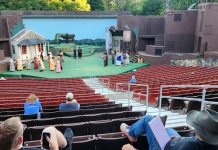
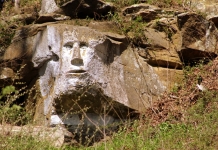


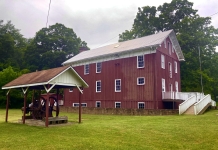
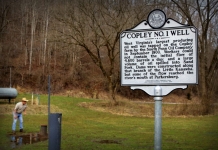
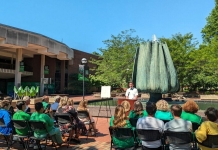


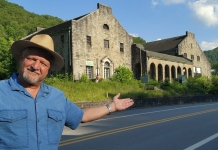


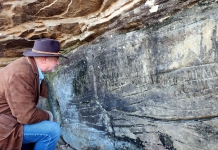

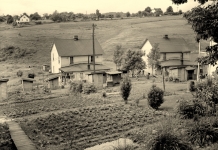





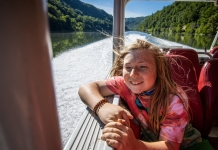
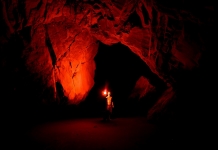








Facebook Comments